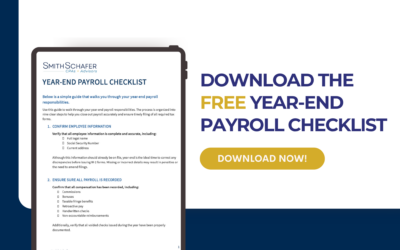Some surveys indicate that more than 30% of all charitable giving occurs in December, and that over 10% of donations are made in the last three days of the year. The year-end holiday spirit may be a factor in the early winter philanthropy, but taxes probably play a role, as well. A check you write to your favorite charity in December gives you a tax deduction the following April, but if you wait until New Year’s, you will have to wait a full year for the tax benefit. To do well while doing good, you might reconsider the typical practice of writing checks for gifts to charity. Instead, give appreciated securities. Going into the ninth year of a bull market, you probably have stocks or stock funds that have gained value and would be ideal for contributing to your favorite cause.
Example 1: Steve Smith donates, by check, $5,000 every year to a cancer research charity. This year, Steve looks over his portfolio and sees that one of his stocks has appreciated substantially since its purchase in 2015, so he decides to reduce his exposure to that company. Steve paid $30 each for the shares, which now trade at $50. If he sells $5,000 worth of those shares, Steve would have a $2,000 long-term capital gain and owe $300 to the IRS, at a 15% tax rate. Instead, he donates $5,000 worth of shares to his favorite charity.
With this tactic, Steve would get the same $5,000 tax deduction that he would have received with a cash contribution. If the assets have been held longer than one year, donors can deduct the fair market value of the contribution. Yet, the donated shares would have been worth only $4,700 to Steve if he had sold them and paid the tax on his gain. Meanwhile, the recipient can sell the shares for $5,000 and owe no tax as a charitable organization. Therefore, Steve gets a full tax break, the charity keeps the full amount, and the capital gain tax obligation is never paid.
Multiple choice
The strategy followed by Steve can be effective if you wish to make one or two charitable gifts of appreciated securities. However, if you want to make many gifts to various charities, the process can get cumbersome. In these situations, you might want to contribute via a donor-advised fund.
Example 2: Jack Franklin donates $5,000 a year to 10 different charities, at $500 each. Jack sends $5,000 of appreciated securities, bought years ago for $3,000, to a donor-advised fund. If he donates the securities by December 31, 2017, Jack can take a $5,000 deduction on his 2017 tax return. Once the money is in the donor-advised fund, Jack can request grants of $500 each to his 10 designated recipients. Even if he requests the grants after 2017, his tax break for this year won’t be affected.
Many financial firms and community foundations offer donor-advised funds, and they might have different requirements for the initial contribution, subsequent contributions, and individual grants.
Senior strategies
Yet another charitable opportunity is available for IRA owners over age 70½. Instead of writing checks or donating appreciated assets, they can make qualified charitable distributions (QCDs) from their IRAs, up to $100,000 per donor per year.
Example 3: Phyllis Thompson, age 77, donates a total of $3,000 a year to 3 different charities. Phyllis takes the standard deduction, rather than itemizing, so she gets no tax benefit from these donations. In 2017, Phyllis donates via QCDs: she sends the $3,000 directly from her IRA to the 3 charities. In this example, Phyllis has a required minimum distribution of $15,000 in 2017. The $3,000 QCD counts as part of her RMD, so Phyllis satisfies her full RMD with a $12,000 IRA withdrawal.
Here, Phyllis has fulfilled her philanthropic intentions and the charities have received their funds. Instead of paying tax on a $15,000 taxable RMD, Phyllis picks up $12,000 of taxable income, saving tax by using QCDs.
Note that people who itemize deductions cannot deduct QCDs. Even so, there may be tax advantages from using QCDs because making RMDs to charity, rather than to IRA owners, will reduce adjusted gross income (AGI). A lower AGI, in turn, may deliver benefits elsewhere on the IRA owner’s tax return.
Stay informed with current business, industry, accounting and tax news. Click here to subscribe. If you have specific questions regarding your tax situation click here to contact us.



